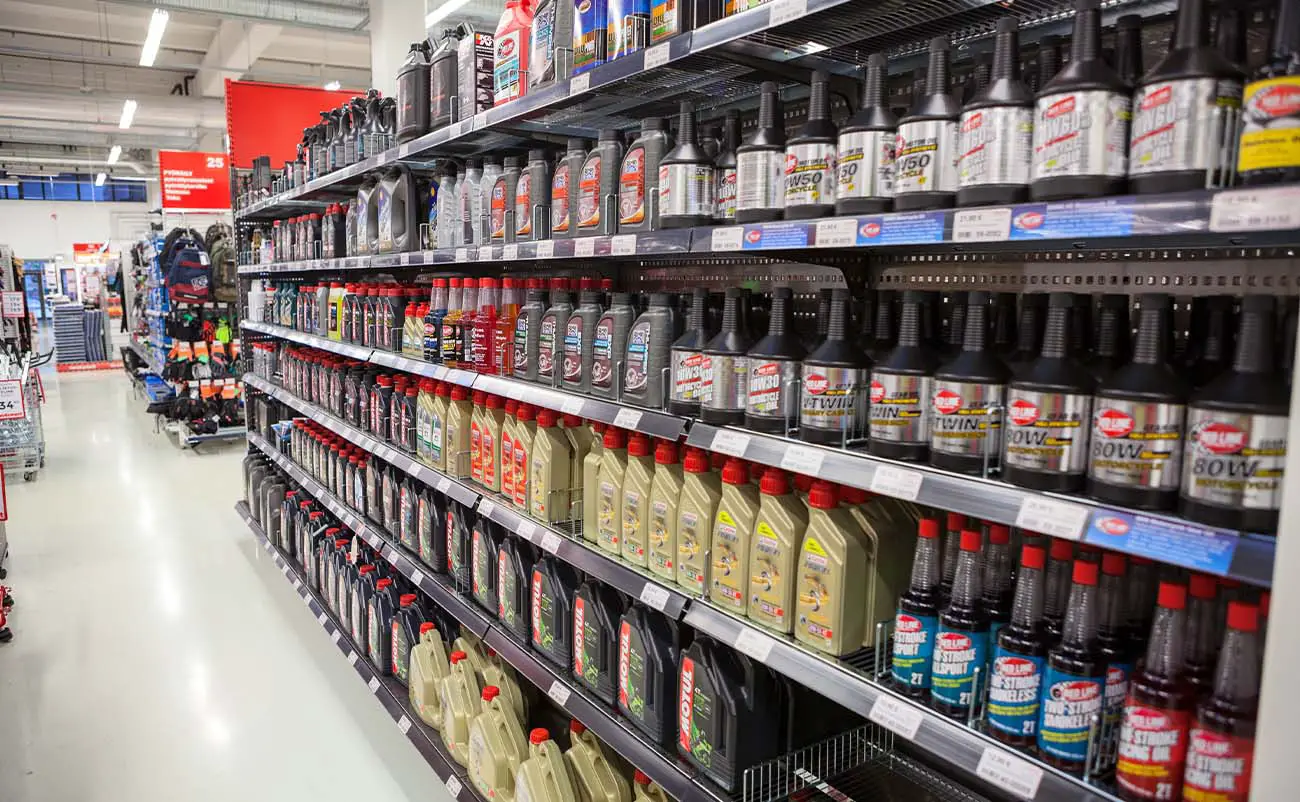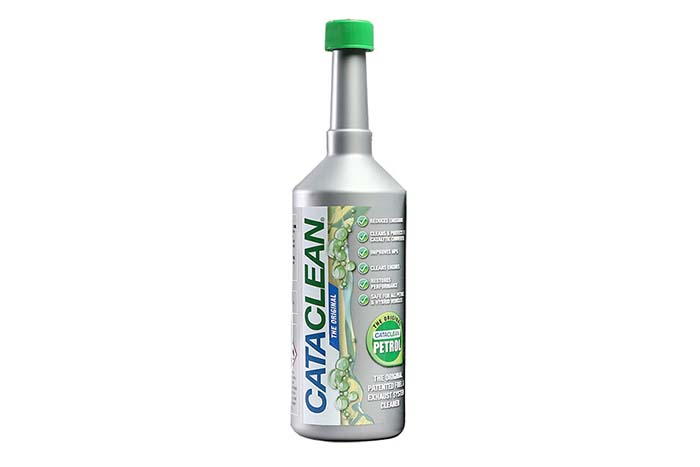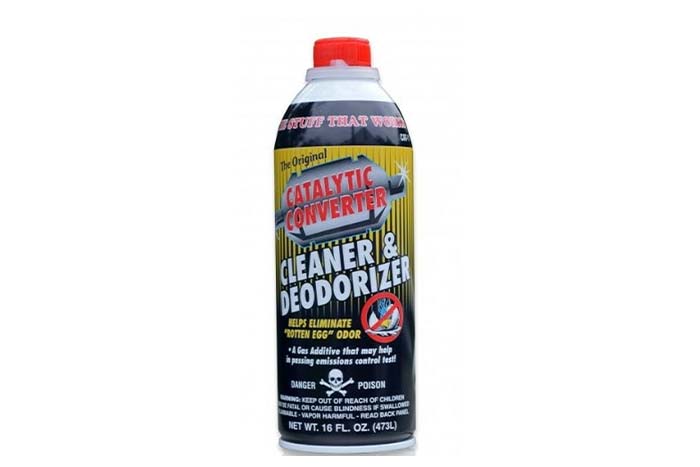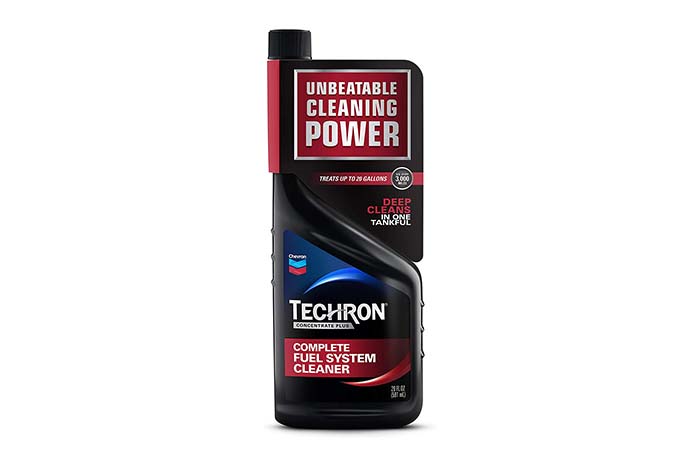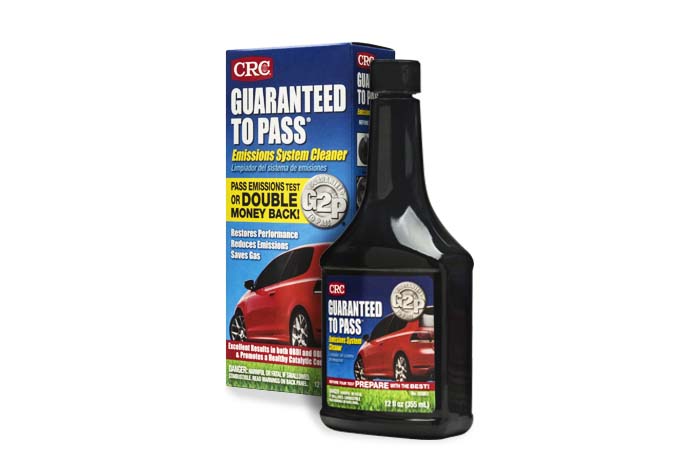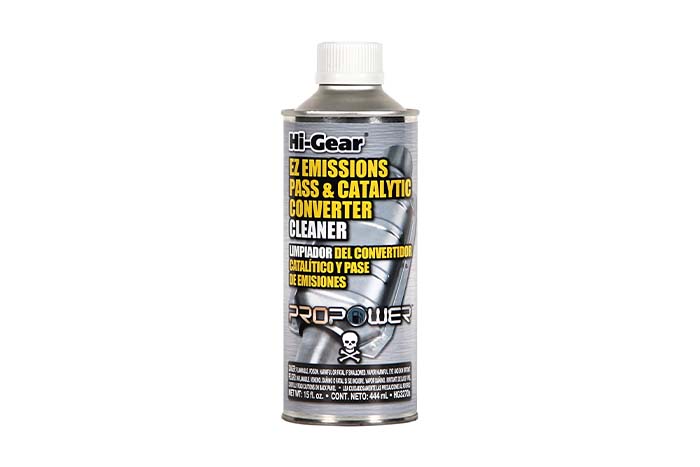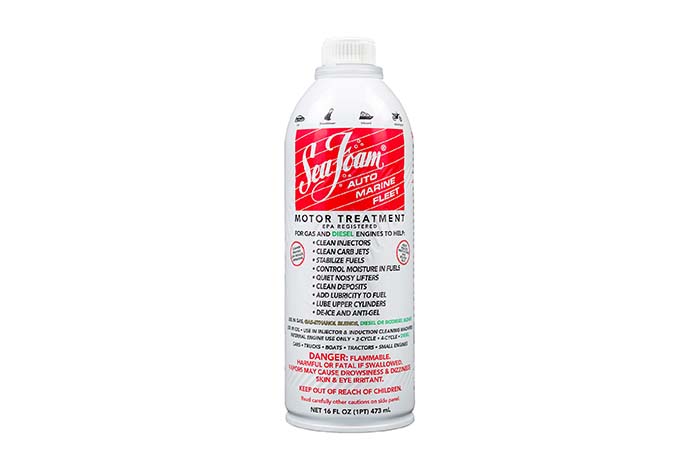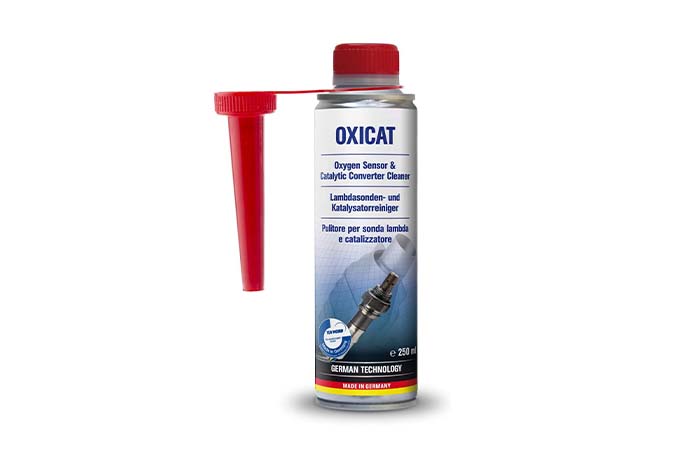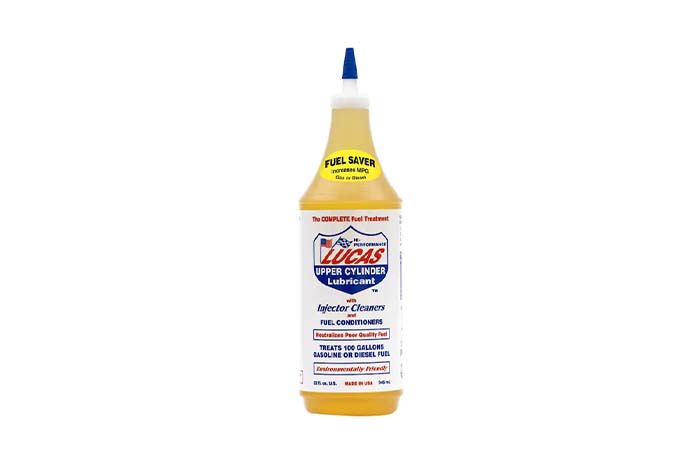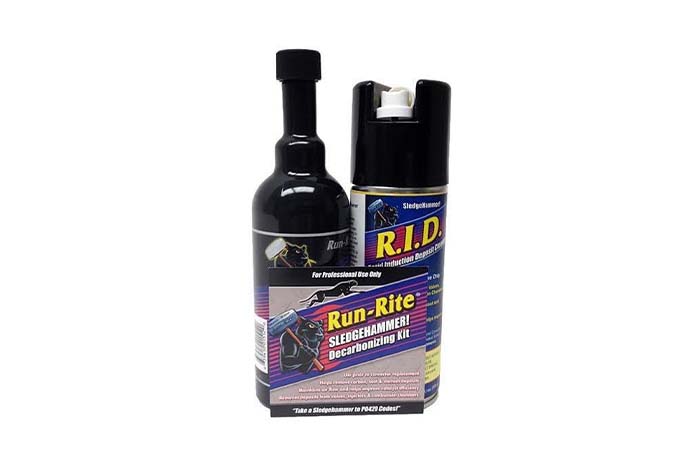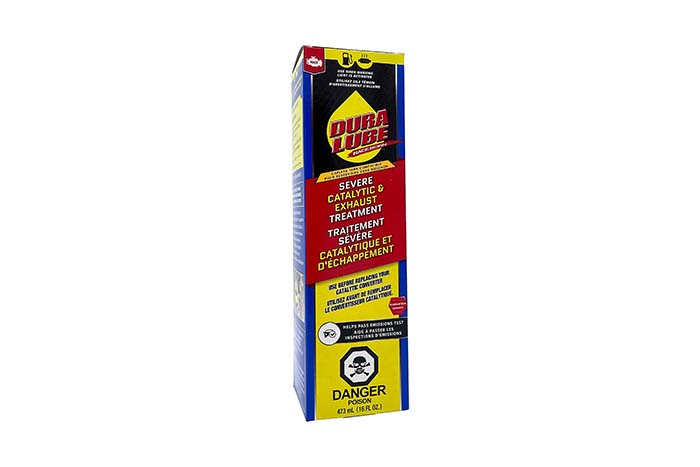Catalytic converters are designed to last for many years, and most of them last for the lifetime of the vehicle. However, they can start to become clogged as they age. These clogs typically form from carbon buildup and other deposits left behind in your catalytic converter. So, what can you do to remove these deposits and keep your catalytic converter clean? That is where catalytic converter cleaners come into play. But how do these cleaners work, and will they restore a catalytic converter that has already become clogged? We will tell you how these products work and give you a list of the ten best cleaners currently on the market.
Table of Contents
How Does A Catalytic Converter Cleaner Work?
The process of using a catalytic converter cleaner is straightforward! In most cases, you pour the bottle of cleaner into your fuel tank and drive your car. The cleaner mixes with your fuel, and it will pass through your car’s combustion chamber and out the exhaust. As the cleaner burns, it will pass through your catalytic converter on its way out of the exhaust system. The cleaner contains special detergents and additives that help to remove the buildup and deposits inside the converter.
Since the cleaner is mixed with your fuel, they will do more than clean your catalytic converter most of the time. Most of these cleaners will not only clean your catalytic converter but will also clean your entire fuel system and exhaust system. This includes your fuel injectors, combustion chamber, cylinder heads, pistons, catalytic converter, and oxygen sensors. These cleaners will remove carbon deposits and unburned hydrocarbons from all the parts of your vehicle mentioned above.
Many people ask, “Do catalytic converter cleaners really work?” They will help to remove carbon and other deposits inside your fuel and exhaust systems. However, if your converter is clogged, there is probably not much that a cleaner can do, and you will likely be looking at a catalytic converter replacement in that case. But, since using a cleaner is as easy as pouring it into your gas tank, you might as well give it a try first!
Clogged Catalytic Converter Symptoms
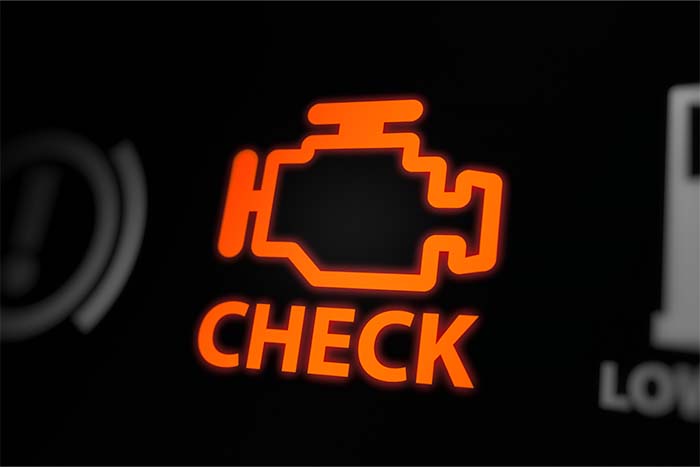
How do you know that your catalytic converter might be getting clogged? Some people recommend using a bottle of cleaner at every oil change to keep your system clean. However, here are some symptoms that point to a clogged converter. If you notice any of these, you should likely go ahead and run a bottle of cleaner through your car.
— Rotten Egg Smell
Your catalytic converter is home to a chemical reaction that takes the harmful gases in your exhaust like carbon monoxide and sulfur dioxide and converts them to safer gases like carbon dioxide. Since sulfur smells like rotten eggs, you might begin to notice a rotten egg smell from your exhaust. This means that your catalytic converter is not filtering your exhaust gases as it should. In that case, you should probably use a bottle of cleaner to help remove deposits from your exhaust system.
— Reduced Engine Performance
As your converter becomes clogged, the backpressure in your entire exhaust system increases. This can cause a reduction in your engine’s performance. You might start to notice that your car will not accelerate like it once did. If you begin to see this performance reduction, it could be a sign of a clogged converter.
— Poor Fuel Economy
Similar to reduced engine performance, a clogged converter might lead to a reduction in fuel economy. As your engine performance begins to decline, you might find yourself pressing the accelerator harder to get your car to move. As you press the gas pedal more and more, your vehicle burns more fuel. Eventually, it will become so drastic that you start to notice filling your fuel tank more often.
— Check Engine Light
This is often one of the first symptoms of a clogged converter. Your vehicle’s computer is constantly monitoring your exhaust gases through oxygen sensors. If those sensors begin to notice too many harmful gases in the exhaust, they will cause your check engine light to illuminate. Almost any repair shop can read the error codes in your car’s computer to help you determine if the converter is the cause.
— Failed Smog Test
If you live in a state that requires emissions testing, then a failed test is a dead giveaway of a clogged catalytic converter. These tests measure the level of harmful emissions and pollutants in your vehicle’s exhaust from the tailpipe, and your car will fail the test if your converter is not doing its job. Before you perform an expensive catalytic converter replacement, you might try a bottle of catalytic cleaner to see if that will help you pass the emissions test.
10 Best Catalytic Converter Cleaners
Perhaps you have decided that you want to try a catalytic converter cleaner on your vehicle, but you aren’t quite sure where to start. Here is our list of the top 10 cleaners out there, so read through the reviews and determine which one would work best for your needs.
#1. Editor’s Pick: Cataclean Engine And Catalytic Converter Cleaner
This Cataclean product from Mr. Gasket consistently ranks at the top of nearly any list you see when discussing cleaners. It helps to clean your entire exhaust system, and it is effortless to use. Open the bottle, pour it into your gas tank, and drive your car like normal. The cleaning solution will do the work while you drive. It works in both gasoline and diesel engines, and it has been shown to reduce hydrocarbon emissions by up to 50%.
#2. Solder-It CAT-1 Catalytic Converter Cleaner
This is the perfect product if you have noticed the rotten egg smell coming from your exhaust. It specifically helps to deodorize your catalytic converter and remove that rotten egg smell. This cleaner is not as harsh as some others on the market as it does not contain some of the more powerful detergents. If your catalytic converter is severely clogged, then this is probably not the best product for you. However, if your converter needs a mild refresh, then this is a great choice.
#3. Chevron Techron Complete Fuel System Cleaner
Chevron’s product is one of the least expensive out there. While it is not explicitly marketed for catalytic converter cleaning, it will help with that as well. It is more intended for fuel system cleaning, however. This product will remove buildup and deposits from your fuel injectors, cylinder heads, spark plugs, and combustion chamber. This is also a mild cleaner, so many people run a bottle of this through their car at every oil change – especially given its price of only around $15 per bottle.
#4. CRC “Guaranteed to Pass” Emissions System Cleaner
If your car has failed its emissions test, this product may be just what you are looking for. It contains several additives and detergents to help remove and dissolve even the harshest buildup in your catalytic converter. CRC guarantees that your vehicle will pass an emissions test after using the product. They stand behind their product so well that they offer a money-back guarantee, but here’s the kicker. If your car fails the test after using this product, they will give you double your money back! This guaranteed to pass emissions test formula is worth a try if you need a serious cleaning product.
#5. Hi-Gear EZ Emissions Pass & Catalytic Converter Cleaner
This is an excellent general-purpose cleaner that cleans your entire fuel system and exhaust system. It will remove deposits and buildup from your injectors, pistons, valves, and catalytic converter. If you have a check engine light illuminated because of an emissions issue, this product is known to fix that. You may be able to avoid an expensive repair by running a bottle of this through your vehicle.
#6. Sea Foam Motor Treatment
Sea Foam is quite famous for those in the automotive world, but this product has a slight catch. It actually won’t clean your catalytic converter. However, it is excellent for cleaning your engine’s internals, intake system, and fuel system. Using this product, people can often correct problems in their engine that will ultimately lead to a clogged catalytic converter. Depending on which parts you are looking to clean, this product can be poured into your gas tank or ingested through your car’s intake system.
#7. OXICAT Oxygen Sensor and Catalytic Converter Cleaner
As the name implies, this product explicitly targets your oxygen sensors and catalytic converter. The company recommends this product as preventative maintenance. This means that you should regularly use a can of this product to help prevent carbon buildup in your exhaust system. It is unlikely to fix an already clogged catalytic converter; however, it can often clear error codes related to oxygen sensor or exhaust problems.
#8. Lucas Fuel Treatment
This product is similar to the Sea Foam product mentioned above. It does not explicitly target or clean the catalytic converter. However, it does a great job of cleaning your fuel system. Since many catalytic converter problems result from a dirty fuel system, this product will help prevent issues with your converter. This is a trusted name popular in many motorsports, so you can rest assured that this is a quality brand.
#9. Sledgehammer Catalytic Converter Fuel System Rapid Induction Deposit Cleaner
This product is more like a system than a single product. It includes both a fuel system cleaner as well as an induction cleaner. It helps to clean your car’s overall intake, fuel, and exhaust systems. While the fuel system cleaner is poured into the gas tank like most other products, the induction system cleaner must be fed into your vehicle through an intake vacuum line. Make sure that you are comfortable and confident in doing this, or you could damage your vehicle. When used correctly, this product works great to give your intake and exhaust systems a good refresh.
#10. DuraLube Severe Catalytic & Exhaust Treatment
This product from DuraLube is another example of a great overall exhaust system cleaner that is not too harsh on your vehicle. This can help reduce harmful emissions and keep your system clean for years to come. This product is not as toxic as some others out there, so it is not likely to clean a catalytic converter that is extremely dirty or clogged. You will want to use this product regularly as a preventative maintenance procedure. Some people compare this product to Marvel Mystery Oil, but the two products serve different purposes.
How Often To Use Catalytic Converter Cleaner
The answer depends on how bad your exhaust system already is and which product you plan to use. If you use one of the gentler products, you can use it at approximately every oil change, and some even recommend using it every 5,000 miles to keep your catalytic converter clean.
However, you will want to avoid using the harsher cleaners too often, and those should only be used sparingly as necessary. If your vehicle has failed an emissions test or you have a check engine light related to an oxygen sensor, then you might want to use one of the more potent products to attempt to fix the issue. However, using them too much could have negative consequences on your vehicle.
The Bottom Line
Catalytic converter cleaners are a great option to try and avoid an expensive catalytic converter replacement. These products can easily be purchased from Amazon or a local automotive parts store, and they are easy to use, and most of them perform very well. If you have an emissions-related check engine light or failed an emissions test, you should try a bottle of cleaner to see if it will fix the issue.
Frequently Asked Questions
Does catalytic converter cleaner really work?
Yes, most of these cleaners work very well. However, they are not a fix for a catalytic converter that is in dire need of replacement. If your converter is clogged, then these products will likely not fix it. But, if you wonder how to clean a catalytic converter that is not too far gone, cleaners are great options. They can reduce and prevent carbon buildup and clean the precious metals inside your catalytic converter.
Can a clogged catalytic converter be cleaned?
Many people ask, “Can I unclog my catalytic converter?” It depends on the severity of the clog. If the clog is not extremely severe, then some of the harsher cleaners might work for it. However, if the converter is clogged, then a cleaner might not do much good. The converter will likely need to be replaced with a new one in that case.
What are the side effects of using a catalytic converter cleaner?
There are generally no harmful side effects from using these cleaners. In some cases, you might see a small amount of smoke from your exhaust system as the cleaner dissolves and burns the buildup in your exhaust system. On the plus side, you might also see increased engine performance and better fuel efficiency!
Do I need to replace my catalytic converter?
If you have already tried a cleaner without success and your vehicle still has emissions problems, you will probably need to replace your catalytic converter. In that case, you should visit a repair shop to determine the cause of the problem, and a mechanic will be able to tell you whether converter replacement is necessary.

